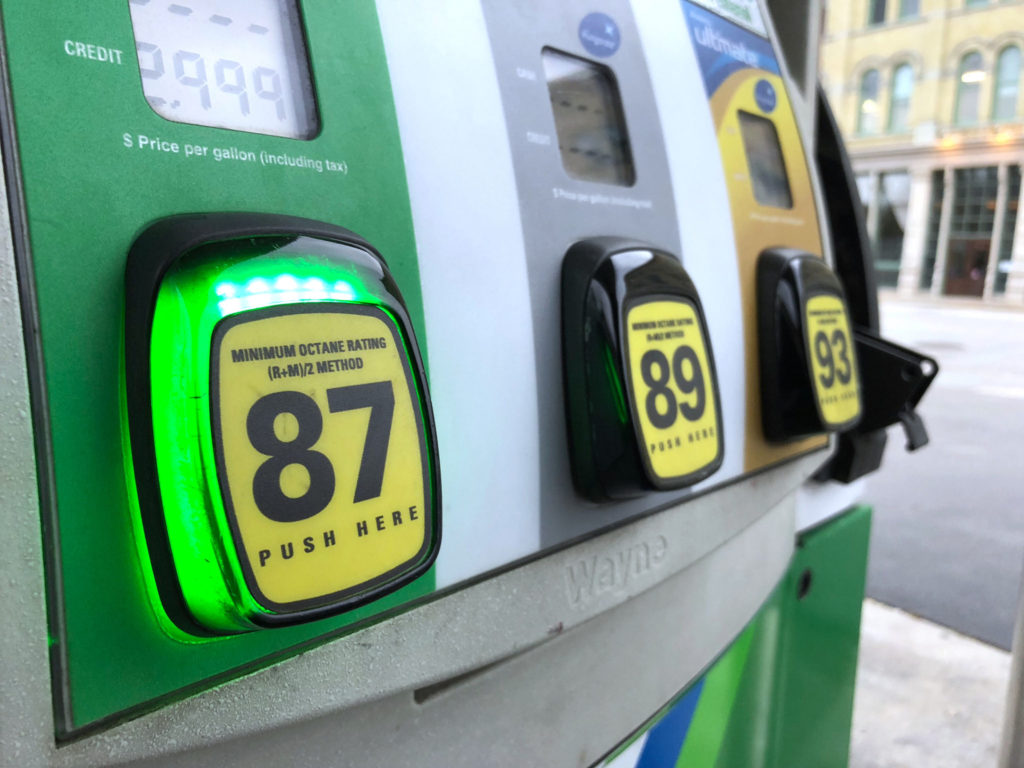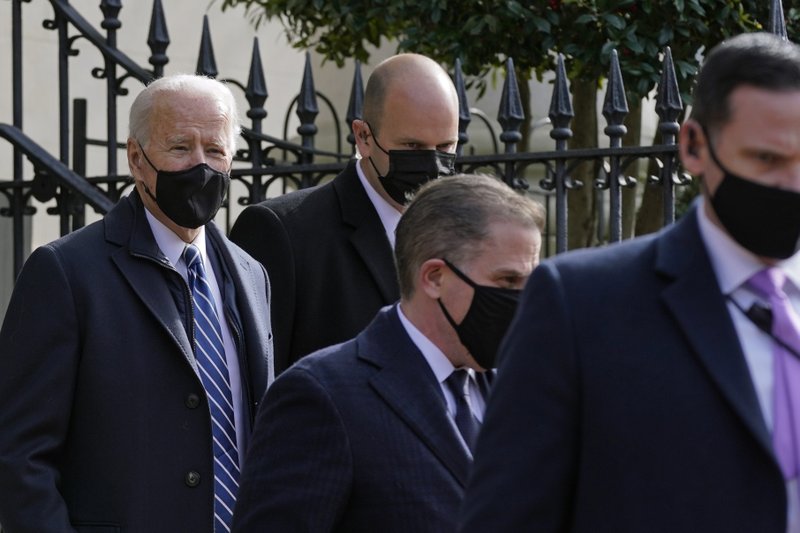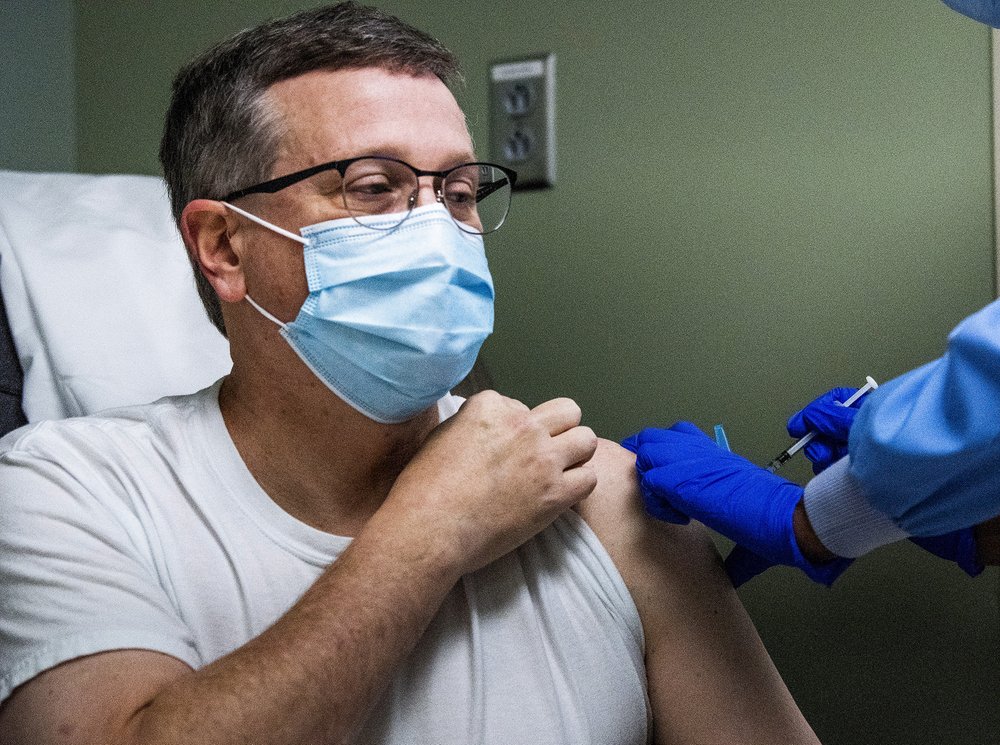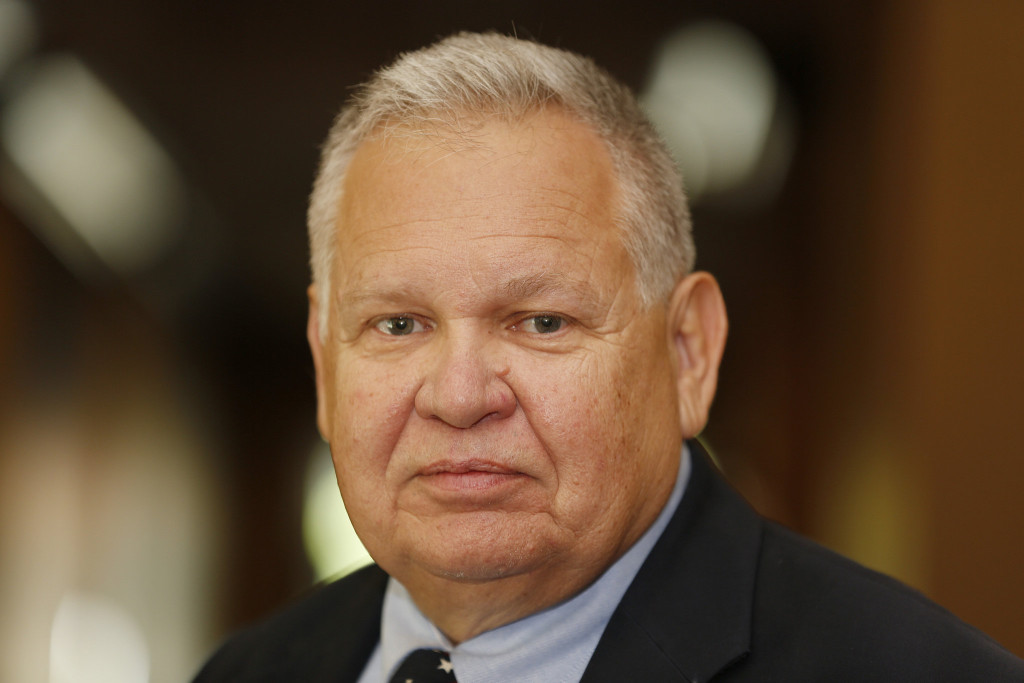Will Hampson: Biden administration gas tax hike could be a double whammy for Alabamians

In his first few hours in office, Joe Biden took a number of actions, all by executive fiat, that will have negative impacts on the state of Alabama. On day one Biden effectively took away a Congressional seat from Alabama, with an Executive Order that will count illegal aliens towards Congressional apportionment. This will reward California, New York, and other states that have been illegal immigration friendly. More importantly, it will severely hurt the states like ours that have rejected illegal aliens and sanctuary cities. In addition to his executive actions, Biden and his Cabinet nominees have floated other liberal policy ideas that they hope to enact in the coming term. Alabamians are all too familiar with one of these policy proposals. Former South Bend, Indiana Mayor Pete Buttigieg, a Democratic Presidential nominee and now appointed to be Biden’s Secretary of Transportation, floated the idea of a gas tax hike in his confirmation hearing with the Senate Commerce, Science, and Transportation Committee. The national gas tax has not been raised since 1993, when Congress approved a 4.3 cent per gallon increase. The idea has been brought up since 1993, even as recently as 2017, but many Republicans in Congress have said raising taxes is a non-starter. Additionally, Buttigieg suggested they may try to tie gas tax raises to inflation, meaning the tax could increase over time without Congress having to approve it again. The political climate is currently well-suited for Democrats to increase taxes on whatever they please. For the first time since 2008, they control the House, Senate, and Presidency. As Republicans are now well-aware, everything floated by Democrats could come to fruition. This puts Alabamians in a difficult, but familiar, position. In 2019, the Alabama legislature, at the behest of Governor Kay Ivey, passed an unpopular ten cent per gallon gas tax throughout the state. The tax was raised six cents per gallon in October 2019, another 2 cents per gallon in October 2020, and is scheduled to be raised a final 2 cents per gallon in October of this year. With this being the case, Alabamians could be particularly hard hit by a gas tax increase by both the federal and state governments. While the exact numbers from the Biden Administration have not yet been discussed, Alabamians could be in store for a double-dipping that could raise gas prices in the neighborhood of 15 cents per gallon from what they were paying in early 2019 before the Rebuild Alabama Act became law. Of course, a global pandemic was nothing that legislators could have seen coming, but nonetheless, it is not a good look for state lawmakers raising taxes during the COVID pandemic, which is exactly what happened, albeit automatically, this past October. The last thing they wanted was the federal government to do the same thing at nearly the same time. To make matters worse for Alabama Republicans, Republicans in the U.S. House and Senate are expected to vehemently oppose the gas tax if it makes it into a bill. The optics of Alabama Republicans raising taxes while their national counterparts refuse to do the same could be devastating and could have major impacts in 2022 when they are up for re-election. It will reignite a hot-button issue that many legislators were hoping would be long forgotten by the time their re-elections rolled around. Having a national debate over this issue will certainly put it fresh in voter’s minds when they go to vote in 2022. But maybe this is a good thing. Maybe this is just what we as voters need. It will be clear as day if Mo Brooks, Robert Aderholt, Mike Rogers, Gary Palmer, Barry Moore, and Jerry Carl vote against a gas tax raise while your local State Rep. or State Senator did not. The voters tried to say back in 2019 that they would not stand for this. That they would remember. Well, now we’ll see. In the meantime, as is usually the case, we the people will be the biggest losers in all of this. The government will try to get their double-dip, and it seems that just like the first time we will have little say in the matter. Start saving your pennies for gas now. You’re going to need them. Will Hampson is a graduate of Alabama A&M. He hosts Will Hampson Weekends on WVNN in Huntsville, Alabama. You can follow and contact him via Twitter @thewillhampson.
2 in 5 Americans live where COVID-19 strains hospital ICUs

Straining to handle record numbers of COVID-19 patients, hundreds of the nation’s intensive care units are running out of space and supplies and competing to hire temporary traveling nurses at soaring rates. Many of the facilities are clustered in the South and West. An Associated Press analysis of federal hospital data shows that since November, the share of U.S. hospitals nearing the breaking point has doubled. More than 40% of Americans now live in areas running out of ICU space, with only 15% of beds still available. Intensive care units are the final defense for the sickest of the sick, patients who are nearly suffocating or facing organ failure. Nurses who work in the most stressed ICUs, changing IV bags and monitoring patients on breathing machines, are exhausted. “You can’t push great people forever. Right? I mean, it just isn’t possible,” said Houston Methodist CEO Dr. Marc Boom, who is among many hospital leaders hoping that the numbers of critically ill COVID-19 patients have begun to plateau. Worryingly, there’s an average of 20,000 new cases a day in Texas, which has the third-highest death count in the country and more than 13,000 people hospitalized with COVID-19-related symptoms. Full Coverage: Coronavirus pandemic According to data through Thursday from the COVID Tracking Project, hospitalizations are still high in the West and the South, with over 80,000 current COVID-19 hospital patients in those regions. The number of cases reported in the U.S. since the pandemic’s start surpassed 25 million on Sunday, according to Johns Hopkins University. Encouragingly, hospitalizations appear to have either plateaued or are trending downward across all regions. It’s unclear whether the easing will continue with more contagious versions of the virus arising and snags in the rollout of vaccines. In New Mexico, one surging hospital system brought in 300 temporary nurses from outside the state, at a cost of millions of dollars, to deal with overflowing ICU patients, who were treated in converted procedure rooms and surgery suites. “It’s been horrid,” said Dr. Jason Mitchell, chief medical officer for Presbyterian Healthcare Services in Albuquerque. He’s comforted that the hospital never activated its plan for rationing life-saving care, which would have required a triage team to rank patients with numerical scores based on who was least likely to survive. “It’s a relief that we never had to actually do it,” Mitchell said. “It sounds scary because it is scary.” In Los Angeles, Cedars-Sinai Medical Center ran into shortages of take-home oxygen tanks, which meant some patients who could otherwise go home were kept longer, taking up needed beds. But the biggest problem is competing with other hospitals for traveling nurses. “Initially, when the COVID surges were hitting one part of the country at a time, traveling nurses were able to go to areas more severely affected. Now with almost the entire country surging at the same time,” hospitals are paying twice and three times what they would normally pay for temporary, traveling nurses, said Dr. Jeff Smith, the hospital’s chief operating officer. Houston Methodist Hospital recently paid $8,000 retention bonuses to keep staff nurses from signing up with agencies that would send them to other hot spots. Pay for traveling nurses can reach $6,000 per week, an enticement that can benefit a nurse but can seem like poaching to the hospital executives who watch nurses leave. “There’s a lot of these agencies that are out there charging absolutely ridiculous sums of money to get ICU nurses in,” Boom said. “They go to California, which is in the midst of a surge, but they poach some ICU nurses there, send them to Texas, where they charge inordinate amounts to fill in gaps in Texas, many of which are created because nurses in Texas went to Florida or back to California.” Space is another problem. Augusta University Medical Center in Augusta, Georgia, is treating adult ICU patients, under age 30, in the children’s hospital. Recovery rooms now have ICU patients, and, if things get worse, other areas — operating rooms and endoscopy centers — will be the next areas converted for critical care. To prevent rural hospitals from sending more patients to Augusta, the hospital is using telemedicine to help manage those patients for as long as possible in their local hospitals. “It is a model I believe will not only survive the pandemic but will flourish post-pandemic,” said Dr. Phillip Coule, the Augusta hospital’s chief medical officer. Hospitals are pleading with their communities to wear masks and limit gatherings. “There just hasn’t been a lot of respect for the illness, which is disappointing,” said Dr. William Smith, chief medical officer for Cullman Regional Medical Center in Cullman, Alabama. He sees that changing now with more people personally knowing someone who has died. “It has taken a lot of people,” he said of the virus, adding that the death toll — 144 people in six months in a county of 84,000 — “has opened their eyes to the randomness of this.” The Alabama hospital’s ICU has been overflowing for six weeks, with 16 virus patients on ventilators in a hospital that a year ago had only 10 of the breathing machines. “You can see the stress in people’s faces and in their body language. It’s just a lot for people to carry around,” Smith said. “Just the fatigue of our staff can affect quality of care. I’ve been encouraged we’ve been able to keep the quality of care high,” Smith said. “You feel like you are in a very precarious situation where errors could occur, but thankfully we’ve managed to stay on top of things.” Hospitals say they are upholding high standards for patient care, but experts say surges compromise many normal medical practices. Overwhelmed hospitals might be forced to mobilize makeshift ICUs and staff them with personnel without any experience in critical care. They might run out of sedatives, antibiotics, IVs, or other supplies they rely on to keep patients calm and comfortable while on ventilators. “It’s really daunting and mentally taxing.
Joe Biden to reinstate COVID travel rules, add South Africa

President Joe Biden on Monday will formally reinstate COVID-19 travel restrictions on non-U.S. travelers from Brazil, Ireland, the United Kingdom and 26 other European countries that allow travel across open borders, according to two White House officials. The officials, who spoke on the condition of anonymity to discuss the order, also confirmed Sunday that South Africa would be added to the restricted list because of concerns about a variant of the virus that has spread beyond that nation. Biden is reversing an order from President Donald Trump in his final days in office that called for the relaxation of the travel restrictions as of Tuesday. The decision to reverse the order is not surprising, but the addition of South Africa to the restricted travel list highlights the new administration’s concern about mutations in the virus. The South Africa variant has not been discovered in the United States, but another variant — originating in the United Kingdom — has been detected in several states. Reuters was first to report Biden’s decision to add South Africa to the list. Biden last week issued an executive order directing federal agencies to require international air travelers to quarantine upon U.S. arrival. The order also requires that all U.S.-bound passengers ages 2 and above get negative COVID-19 test results within three days before traveling. Republished with the permission of the Associated Press.
Birmingham VA expands vaccine program; more doses still key

The Birmingham VA Health Care System is expanding its ability to vaccinate veterans against the coronavirus that causes COVID-19, provided it can get enough doses of the vaccine. A partnership with the United Way of Central Alabama will allow the agency to provide as many as 1,000 shots a day beginning Monday to veterans who are at least 65 years old, the VA said. That’s up from the current daily total of 300 people. The change comes because the VA’s vaccine clinic is moving into a United Way building in downtown Birmingham. Chief executive Stacy Vasquez said the system will schedule as many veterans as it can for shots, but obtaining additional vaccine is key. “Right now, I have enough vaccine to take care of 5,000 people next week. But then after that, unless I get another shipment, I don’t know.” Vasquez told WBRC-TV. The VA’s vaccination program operates on a separate track than the one administered by the Alabama Department of Public Health, which is offering vaccines for people 75 and older. It, too, is in need of additional vaccine. Republished with the permission of the Associated Press.
Jim Zeigler: Prison lease plan may be a 30-year mistake costing $2.6 billion

We are risking a 30-year mistake that would cost us $2.6 billion. Governor Kay Ivey is just days away from signing contracts that will saddle taxpayers with a minimum $2.6 billion bill for leasing three new mega-prisons for 30 years. In the end, we will own equity in the prisons of exactly ZERO. The companies that held these lucrative leases will own the prisons, and we, the taxpayers, will have to start completely over and pay for the prisons a second time – pay 100% again. We would shell out billions of dollars but own nothing in the end. We Alabamians cannot let this happen. That is why I am calling for an independent management audit of Alabama’s Department of Corrections. I invite my fellow state leaders to join me in this call for transparency. Is that too much to ask when our state currently allocates a whopping 25% of our general fund budget to the prisons? That’s $624 million in 2020, folks! And you can bet your bottom dollar that percentage will keep rising. Next week, ADOC will present their proposed budget to the legislature in the budget review committee meeting. I implore our elected officials to thoroughly interrogate the spending practices and promises of the money-eating ADOC. Given that ADOC is so heavily funded and is about to be hit with an additional $88 million a year expense for 30 years, it seems prudent for legislators to have a chance to evaluate the underlying data that supposedly justifies the prison lease plan. ADOC says they need new prisons rather than renovate the existing ones. They insist it will be cheaper to pay $88 million in annual rent payments for 30 years–totaling $2.6 billion–than to fix and maintain the existing structures or to have the state build new prisons using bond funds. ADOC claims that the “consolidation cost savings” associated with closing old prisons and opening new ones will cover the $88 million price tag. Their conclusion is based on a 100% confidential study done for nearly $20 million by for-profit companies Goodwyn, Mills & Cawood and Hoar Program Management. If the claimed “consolidation cost savings” end up being overstated, ADOC will have to come crawling to the legislature licking their wounds when they inevitably need more taxpayer money. Even if ADOC does manage to scrape together the money within their current budget for the first few years, what happens when these private prison owners hike up the price after 10,000 inmates have been transferred in? The leases must be renegotiated every year. Alabama will have little choice but to pony up whatever amount the owners ask for. This is a 30-year mistake. Beyond these likely problems, the failure of ADOC to do its basic job — keeping society, staff, and inmates safe — should have us all asking, “What exactly is ADOC doing with that $624 million anyway?” An independent management audit of ADOC finances would allow legislators and the public at large to look behind the curtain and expose any misuse of our tax dollars. As it stands, the prison lease plan–one of the largest public expenditures in state history–will be pushed through with little opportunity for legislative or public scrutiny unless we halt it now. Despite ADOC efforts to conduct the entire process in secrecy, anyone who’s paying attention knows enough to see what a terribly wasteful and irreversible deal this is for Alabama. Our elected legislators have never laid eyes on the ADOC plan, and they won’t be given an opportunity to do so until Alabama is already locked in. The checks and balances by the legislative branch have been eliminated in the prison lease plan. ADOC Commissioner Jeff Dunn promised they would release the proposed contracts for these prisons by the end of 2020. Here it is, almost the end of January 2021, and nothing. Is it because ADOC doesn’t want to give the legislators any time to address their dealings in their upcoming session? ADOC insists secrecy is needed to negotiate the best deal possible with the private developers who will build and own the three mega-prisons. The more likely explanation is that ADOC wants to push this lease deal through without answering anyone. There are no good reasons why we’re jumping into bed with for-profit corporation CoreCivic—a company with a record of abuse and mismanagement. Just ask Kansas, Tennessee, and Idaho if they would ever sign up to work with CoreCivic again. A brief dive into ADOC public records reveals wasteful, unaccountable spending for decades. Since 2012 ADOC has spent $32.5 million on outside law firms, despite having an internal legal team. As for wage costs, ADOC pays over $30 million in overtime pay per year–more than four times the next highest paying agency. How easy it is for these government bureaucrats to spend our money! Given that we are the only state prison system in the country currently facing a prison lawsuit by the Department of Justice, we must be doing something wrong. Other states know better than to let their prisons run unchecked. Many conduct needed audits to catch problems before they balloon out of control. Take Mississippi, a state that recently conducted a thorough audit of its prison system. Like in Alabama, Mississippi’s prisons were under investigation by the DOJ for alleged unconstitutional treatment of inmates. In response, their commissioner called for an independent management audit to root out wastefulness or corruption. The resulting report detailed hundreds of thousands in wasteful expenses in the Mississippi DOC budget, including massage chairs, Himalayan salt lamps, and six TVs for the commissioner’s executive suite. When the findings were released, the prison system adopted all 18 recommendations within the report aimed at fixing the abuses. “Without the [audit], it would have been difficult, if not impossible, to uncover some of the misspending here,” Mississippi State Auditor Shad White said. “It is encouraging to see [the DOC’s] proactive approach to fixing the problems.” So far, Mississippi has avoided a DOJ lawsuit. Alabama has not been so blessed. In December 2020, the DOJ officially sued Alabama following findings of unsafe conditions, rampant violence, and excessive use of force on inmates.


